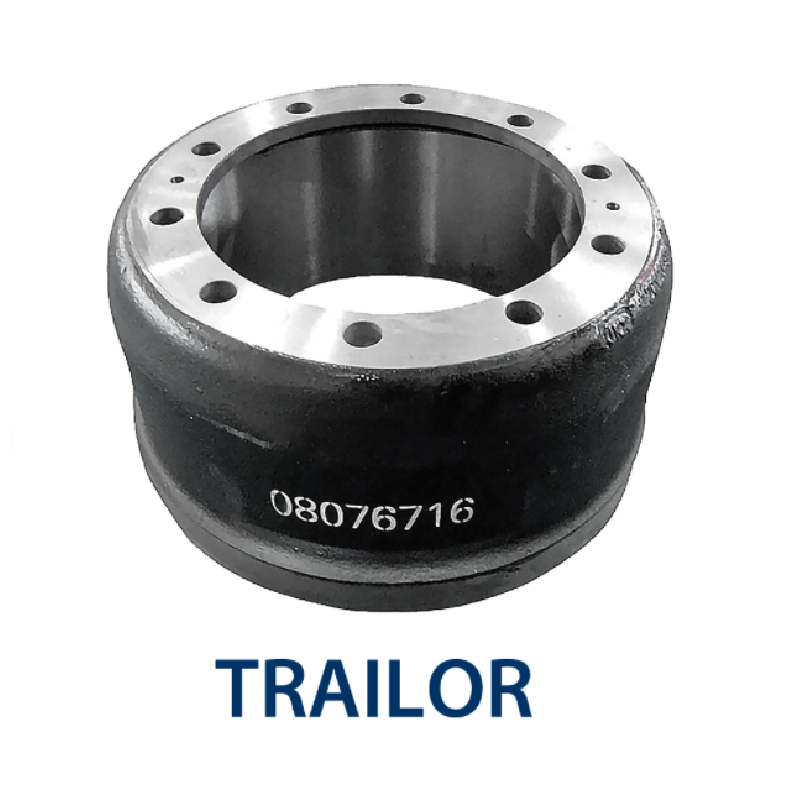វិច្ឆិកា . 24, 2024 06:34 Back to list
how to measure brake drums
How to Measure Brake Drums
Measuring brake drums is a crucial task in automotive maintenance, ensuring that the braking system functions effectively and safely. Proper measurement helps determine whether brake drums need to be replaced or resurfaced. Here’s a detailed guide on how to measure brake drums accurately.
1. Gather Required Tools
Before you start measuring, ensure you have the right tools on hand
- Calipers (digital or dial) - A micrometer (optional) - A clean surface for working - A lift or jack stands to elevate the vehicle - Safety goggles and gloves
2. Safety First
Always prioritize safety. Begin by parking the vehicle on a flat surface and engage the parking brake. Use jack stands to stabilize the car if you're using a jack for elevation. This ensures you have a secure workspace.
3. Remove the Wheel
Using a lug wrench, loosen the wheel lug nuts and then remove the wheel completely. This will grant you access to the brake drum. Depending on your vehicle, you may need to remove additional components such as brake shoes or backing plates.
Before measuring, it’s important to clean the brake drum. Use brake cleaner and a rag to wipe away any dust, grease, or debris. This ensures accurate measurements and prevents any contaminants from affecting the brake performance.
how to measure brake drums

5. Measuring the Diameter
To measure the diameter of the brake drum, use a caliper. Place the caliper on the inner surface of the drum and expand it until it touches both sides. Record the measurement, and if you have a micrometer, it can provide a more precise reading for the drum's thickness.
Sometimes brake drums will wear unevenly, especially if the vehicle has been frequently driven under heavy loads or has had brake issues. To check for uneven wear, take measurements at multiple points around the circumference of the drum.
6. Determine the Minimum Diameter
Check the manufacturer's specifications for the minimum allowable diameter for your specific brake drum. This information can usually be found in a service manual or online. If your measurement approaches or is below this minimum, it is time to replace the drum.
7. Inspect for Cracks and Damage
While measuring, visually inspect the brake drum for any cracks, scoring, or other signs of damage. Any abnormalities could compromise braking performance and should be addressed immediately.
8. Reassemble and Test
Once you finish measuring and inspecting the brake drum, reassemble any components you removed, ensuring everything is tightly secured. After reattaching the wheel, lower the vehicle and perform a test brake to ensure everything functions correctly.
Conclusion
Measuring brake drums is a fundamental skill for maintaining vehicle safety. By following these steps, you can ensure that your braking system operates optimally, giving you peace of mind while on the road. Regular checks and maintenance are key to prolonging the life of your vehicle’s braking components.
-
Brake Drum Man - High-Quality Drum Brake Drums & Brake Shoes for Reliable Performance
NewsJun.24,2025
-
High-Quality Brake Drum Kamaz – Durable Drum Brake Drum & Brake Shoe Replacement
NewsJun.10,2025
-
High-Quality Brake Drum Liza for Drum Brake Systems - Superior Durability and Performance
NewsJun.10,2025
-
High-Quality Brake Drum Kamaz – Durable Drum Brake Drum & Brake Shoe Solutions
NewsJun.10,2025
-
Durable Kamaz Brake Drums High-Performance Truck Parts
NewsJun.09,2025
-
Premium Brake Drum Maz Kit with Shoes Enhanced Braking
NewsJun.09,2025
